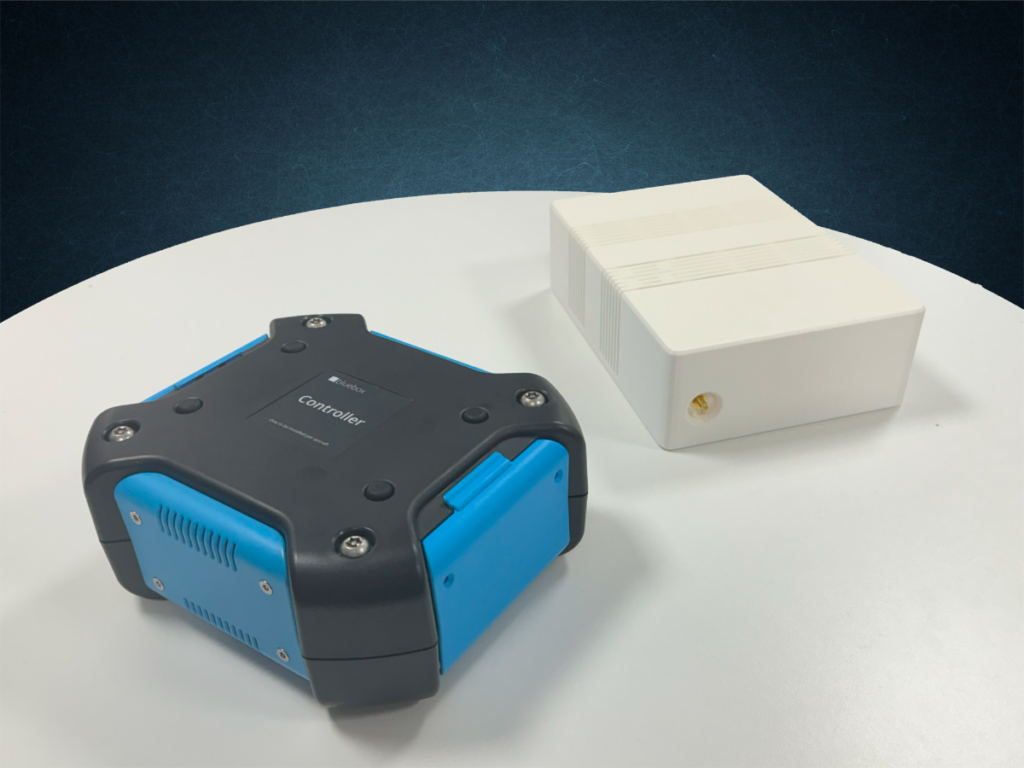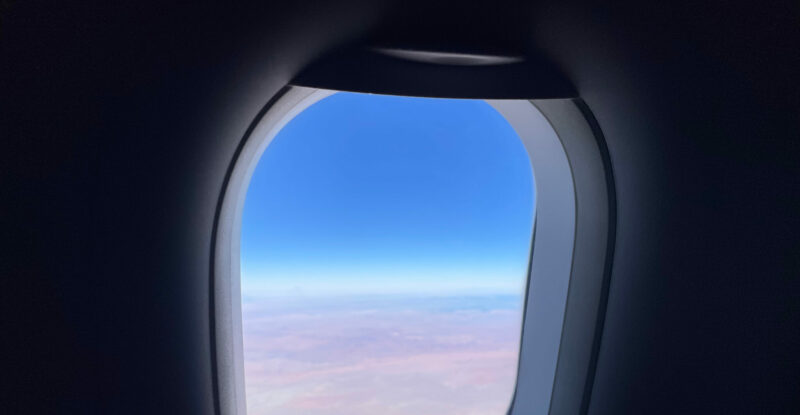For nearly a decade, the makers of portable wireless inflight entertainment solutions have enabled airlines to delight passengers onboard without having to commit to major aircraft retrofits or costly seatback screens.
Facilitating a BYOD model, these compact boxes — containing both a server and WAPs — stream content such as movies, TV shows, games, audio entertainment and the moving map to passengers’ own devices. Customized portals, buy-on-board menus, and advertising can also be facilitated.
While the physical units might be battery powered and carried on board by crew members or catering employees, or connected to aircraft power, until recently they have not sported a live connectivity element.
That is now changing with Iridium’s introduction of the Certus 100 mid-band service in aviation. With IP data speeds of up to 88 Kbps, Certus 100 has the ability to support social messaging, real-time credit card transactions, and other ops benefits. And as such, some wireless IFE and e-commerce specialists have seen fit to augment their systems with this Low Earth Orbit (LEO) satcom service.
During the Aircraft Interiors Expo (AIX) in Hamburg, Runway Girl Network journalists sat down with two such providers, AirFi and Bluebox Aviation Systems, to understand their different approaches to the market. Both confirm that eradication of inflight fraud is a primary driver for adoption.
AirFi LEO
Cooking with gas since it brought its first portable streaming solution to air and rail sectors in 2014, AirFi is now also offering AirFi LEO in aviation, an IP-based solution that is supported by two antennas — one on each side of the aircraft, mounted inside a window.
AirFi is seeing “serious momentum” for AirFi LEO, company founding partner and CEO Job Heimerikx told RGN on the back of announcing that the boxes had been contracted in 1Q by a bevy of different carriers to be installed on 50 aircraft. “And the beauty is that it’s across the world. It’s with all kinds of aircraft types… So, it’s a very nice picture. And we see that the power of a window-installed surface antenna is really picking up.”
Using two window-mounted antennas “makes a redundant system compared to one receiver on top of the aircraft and still with the same reception and the same performance that you would require from the system like this,” suggested Heimerikx, pointing to the miniature antenna supplied by Skytrac.

Two tiny window-mounted Skytrac antennas are used to support the Iridium Certus 100 service. Image: Mary Kirby
“We really do not require to use a patch antenna,” continued Heimerikx. “A patch antenna means drilling a hole in the fuselage, which means a lot of cost, a lot of downtime for the aircraft which also means a lot of cost.
“Many of our clients are low-cost carriers, smaller airlines that lease aircraft. In order to make a hole in the fuselage, they actually need to go back to the lessor and then ask for permission. And when they return the aircraft, they need to fill up the hole. So that’s a lot of cost. We can achieve the same reliability, actually more than the same reliability, by using two antennas inside the windows.”
When AirFi introduced a ‘Mall in the Sky’ offering after the Covid pandemic — enabling gate-to-gate inflight shopping, onboard advertising and more — it saw in-seat ordering pick up significantly. Whilst that type of service can be done offline, adding Iridium Certus 100-powered real-time credit card authentication tackles fraud.
Indeed, the number one reason why carriers are choosing AirFi LEO is to eradicate onboard fraud, confided the AirFi CEO.
It’s like a pest in the industry where, depending on who you talk to, the percentages can go from 2% to all the way up to 10% of fraudulent payments or transactions. And if we can bring that simple check of the payment to the ground and back, we can eliminate fraud entirely.
And if you realize that, on a single flight you’re doing $1,600 to $3,000 in sales of food and beverages alone, and then multiply that by, let’s average it to 5% or 6% [fraudulent] and then three flights a day, 365 days a year, that really is fueling the entire business case and you’re making a lot of money and actually saving a lot of money.
As an added benefit, however, the LEO augment can enable airlines to easily tack on free social messaging for passengers. “We’re working on the different messaging systems because every region has a different preference,” said the AirFi CEO.
WhatsApp, for instance, is a popular choice. And AirFi recently rolled out X (formerly known as Twitter) messaging. Crew can also use a messaging service to stay in contact with the ground for operational and customer service improvements.

Heimerikx said the number one reason why low-cost carriers are adopting AirFi LEO is to tackle fraud.
Bluebox Wow plus FFLYA
The ability to support live credit card payment transactions is also driving Bluebox’s decision to integrate its Blueview platform — the digital services software that runs atop its Bluebox Wow portable units — with what it bills as a “low-cost, low-weight connectivity solution” from FFLYA, powered by Iridium Certus 100.
Calling the service a “big game changer”, Bluebox CEO Ken Clark noted at AIX 2024:
[I]t means if you’re an airline and you’re selling food and beverages on the plane, transactions will typically be limited to about between $30 and $50 because, in a disconnected environment, that’s the maximum risk of fraud for an airline.
If you could do that in real time, however, then the fraud risk goes down, and airlines could increase the limit to $500, allowing airlines to sell watches rather than just cigarettes.
Successful ground testing saw purchases sent wirelessly from a tablet to the Bluebox Wow portable unit. This box was connected to the FFLYA router — which itself was connected through a supplemental type certified (STD’d) patch antenna to the Iridium Certus satellite network — enabling payment validation in real time. An STC for the antenna install is currently available for Airbus A320 family aircraft.

Bluebox Wow can be packaged with FFLYA to support real-time credit card transactions. A patch antenna is used. Image: Bluebox
Close observers of the IFE industry might find this particular implementation to be surprising. After all, FFLYA, styled as fflya, was billed as the world’s first inflight Bluetooth free messaging platform that famously used window antennas when recently trialed by Wizz Air for free messaging and later payments ‘out the window’. The fflya solution employed by Wizz Air is not a standard IP interface, but rather a proprietary packet data solution that is specific to text messaging, CC processing and telemetry.
In contrast, Bluebox’s adoption of FFLYA, styled in all caps, is in fact wireless IP-based, not Bluetooth, confirmed Bluebox head of marketing Catherine Brown. Though Bluebox could have chosen the Bluetooth version (the names alone would mesh nicely, dear reader), “it was a straightforward process to select the IP route as Bluebox Wow is already configured for the relevant IP protocols, security, encryption etc,” explained Brown, noting that Bluebox was “focused on validating the solution in the fastest, easiest way possible. Now we have, we can always explore further potential of all options.”
She added, “As we’re fundamentally a software company we’re focused on innovating in the digital services – both passenger facing and those features that add value for our airline customers, such as secure live payments and the benefit that brings for onboard retail. We’re always happy to complement our solution with the experience of those with greater expertise to keep up with technology developments in areas like this and focus on how we can maximise value of integrating critical solutions into Blueview. As you know partnership has been core to our strategy and it remains so.”
Importantly, an Iridium spokeswoman told RGN: “We can confirm that the system that FFLYA is using is a certified Iridium solution. They are using a certified Iridium Certus antenna.”

Ground testing saw Bluebox successfully validate payments via the Iridium Certus 100 service connected to FFLYA. Image: Bluebox
There is another reason to go with a patch antenna for this specific use case, according to Ron Chapman, who in 1987 founded the ASI Group that owns FFLYA. “Ops services are geared for IP, so must be live. Hence why the STC is for the 3-inch roof patch antenna. That guarantees 100% coverage. We know from extensive testing you can’t have gaps or disconnects on live IP, which is why we don’t go out the window. That would frustrate the passengers and crew,” said Chapman, who also serves as president of FFLYA.
In a published statement, Chapman said there can be “a 60-degree blind spot above larger aircraft which can result in a high failure rate of transactions due to the unique time and data requirements of live retail payment validation”.
But AirFi’s Heimerikx disputes the notion that a patch antenna is needed for a consistent payments solution. “[S]ending a 50Kb message over the AirFi-LEO/Iridium Certus network isn’t hard at all, it is child’s play,” he told RGN.
Irrespective of the route taken, LCCs are clearly about to tackle onboard fraud in a meaningful way. That’s not only good news for airlines, but for passengers who ultimately pay the price of scammers’ nefarious actions through higher costs.
Additional reporting by Fintan Horan-Stear
Related Articles:
- Iridium approves third Certus 700 satcom for aero; says more to come
- Satcom providers stand ready as Iridium introduces Certus aviation
- AirFi sees world narrowbody fleet as addressable market for AirFi LEO
- AirFi to fit Atlantic Airways with LEO boxes for messaging, payments
- Novel fflya system sends live CC payments out the window
- #PaxEx Podcast: Bending bluetooth to become an onboard network
Featured image credited to Mary Kirby













